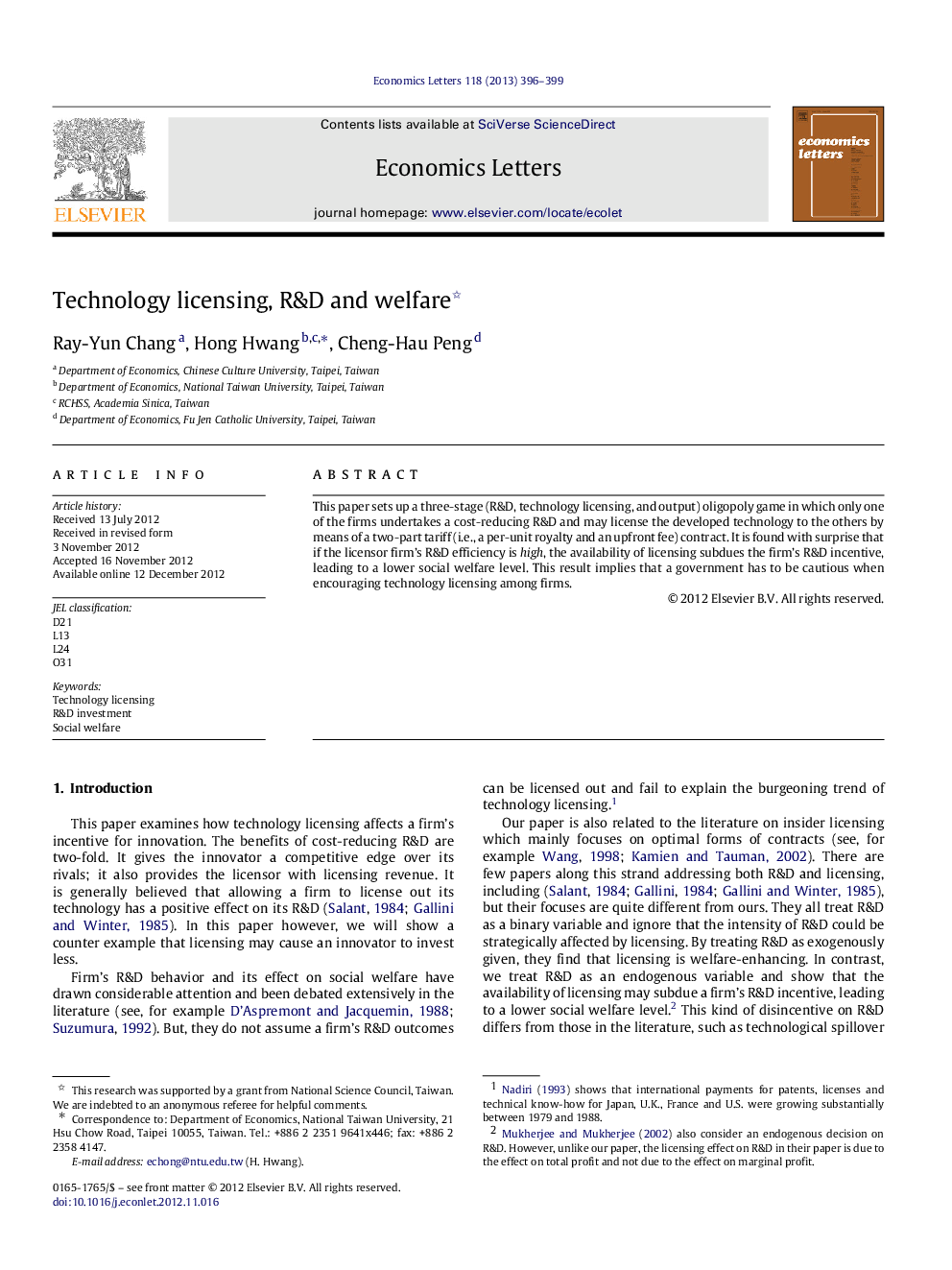| Article ID | Journal | Published Year | Pages | File Type |
|---|---|---|---|---|
| 5060014 | Economics Letters | 2013 | 4 Pages |
This paper sets up a three-stage (R&D, technology licensing, and output) oligopoly game in which only one of the firms undertakes a cost-reducing R&D and may license the developed technology to the others by means of a two-part tariff (i.e., a per-unit royalty and an upfront fee) contract. It is found with surprise that if the licensor firm's R&D efficiency is high, the availability of licensing subdues the firm's R&D incentive, leading to a lower social welfare level. This result implies that a government has to be cautious when encouraging technology licensing among firms.
⺠We compare the R&D efforts of an insider innovator with and without licensing. ⺠The availability of licensing does not necessarily foster the firm's R&D investment. ⺠It may suppress the R&D efforts of the innovator with high R&D efficiency. ⺠Social welfare may go lower under licensing than no licensing. ⺠A government has to be cautious when encouraging technology licensing among firms.
